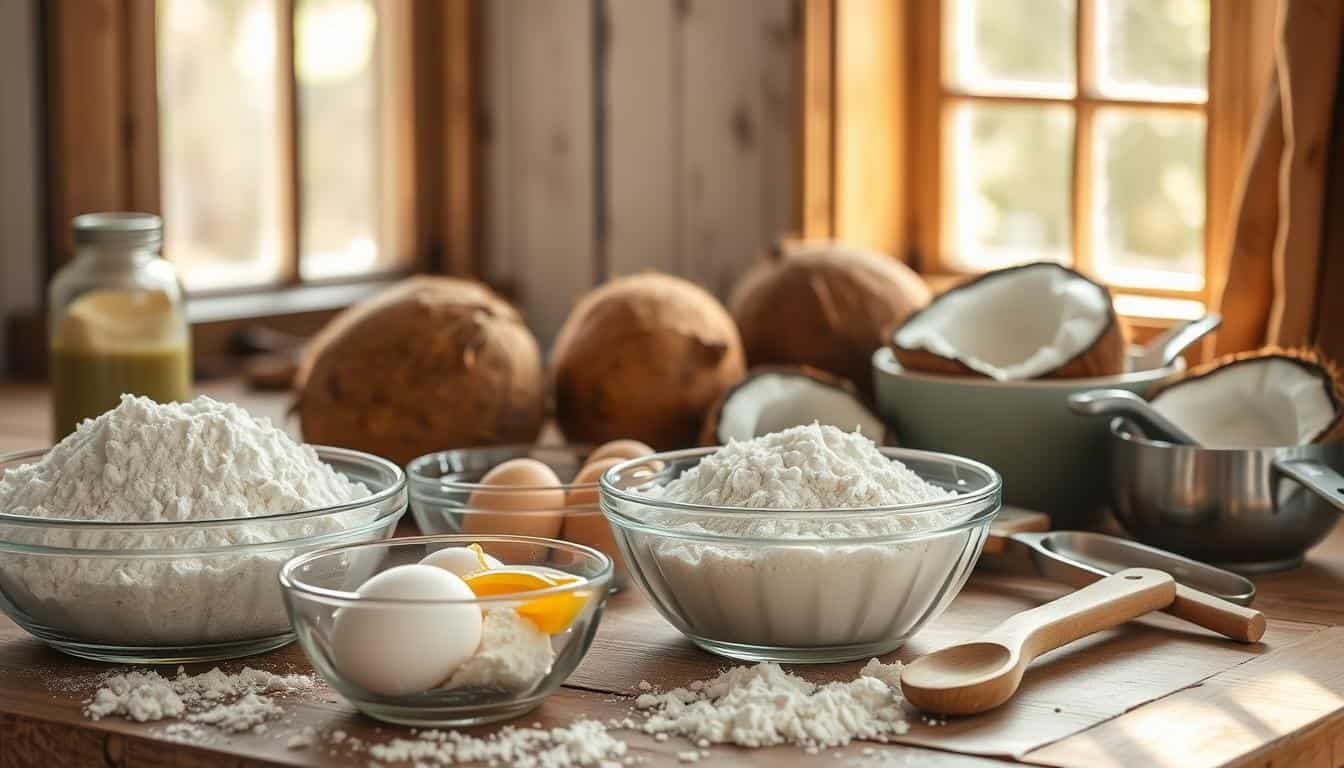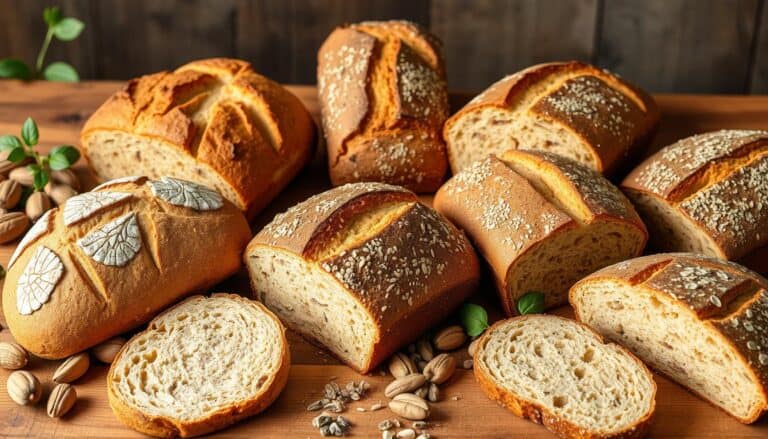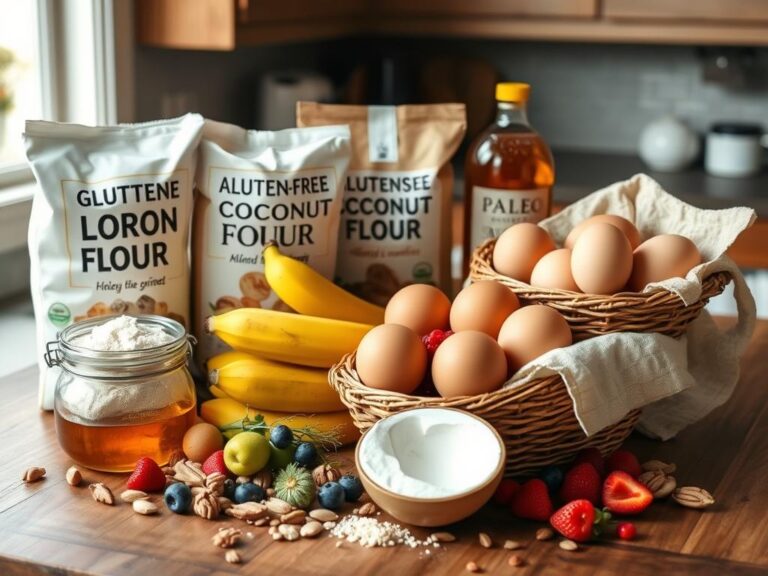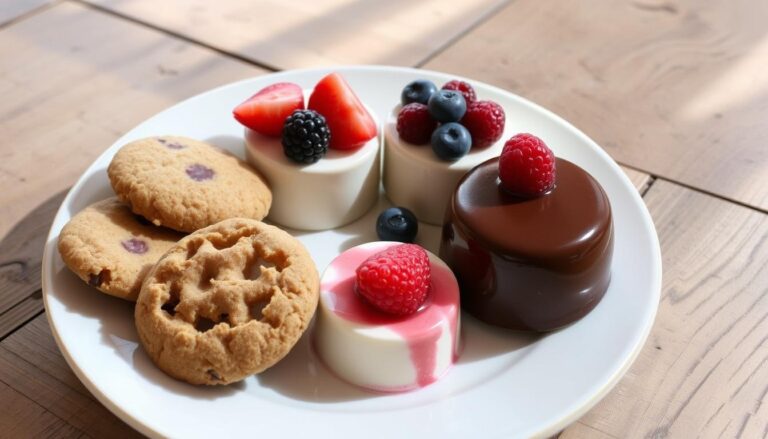Coconut Flour Baking Secrets
This post may contain affiliate links which means I may receive a commission for purchases made through links at no extra cost to you. I only recommend products I truly believe in. Thank you for your support!
Ready to change your gluten-free baking game? Coconut flour is your secret! It’s a healthy alternative that makes traditional recipes better. Plus, it’s affordable, making 5 to 6 recipes from just one 16-ounce bag.
Coconut flour is not just another ingredient. It’s a game-changer for those who care about their health. Brands like Bob’s Red Mill and King Arthur Baking offer high-quality options. They can turn your kitchen into a gluten-free paradise.
Baking with coconut flour takes skill. It’s gluten-free, full of fiber, and versatile. I’ll teach you how to use it to make your cooking better!
Pro tip: You only need 1/2 to 3/4 cup of coconut flour for a loaf or cake. It’s packed with 58% dietary fiber. Its unique moisture-absorbing qualities make your baked goods delicious.
Understanding Coconut Flour
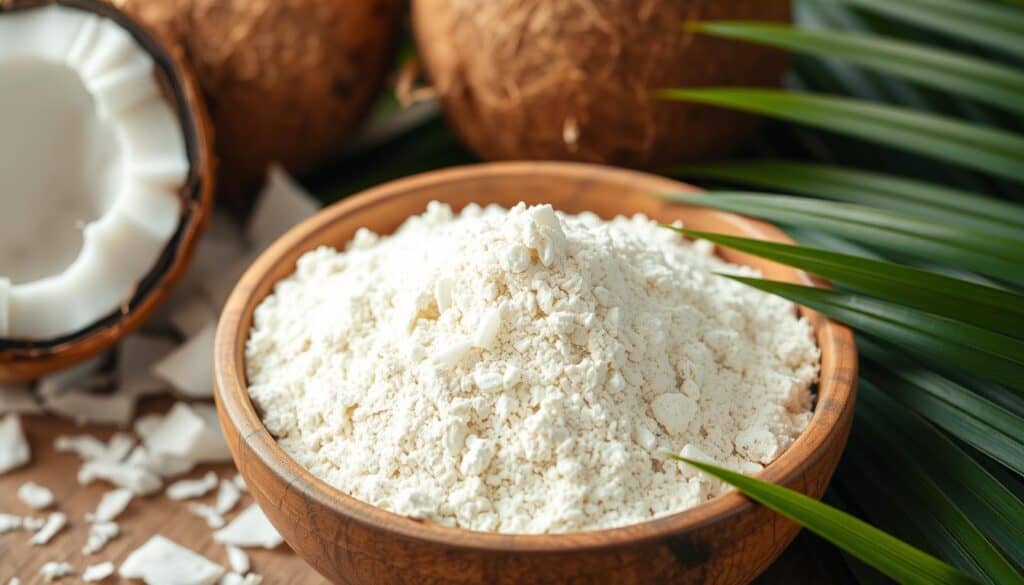
Looking for a versatile ingredient for your low-carb recipes? Coconut flour is a great choice! It’s a hit in grain-free cooking, perfect for health-conscious cooks.
What is Coconut Flour?
Coconut flour comes from dried, ground coconut meat. It’s a by-product of coconut milk making. Unlike regular flour, it’s packed with nutrients. It’s great for those who prefer grain-free or low-carb cooking.
- Naturally gluten-free
- High in dietary fiber
- Low in net carbohydrates
- Rich in essential nutrients
Nutritional Benefits of Coconut Flour
Coconut flour is a nutritional powerhouse! A quarter cup has just eight net carbs. Here are some key facts:
| Nutrient | Amount per 25g |
|---|---|
| Iron | 12.5% Daily Value |
| Dietary Fiber | 44% Daily Value |
| Protein | 4.5 grams |
| Calories | 107 |
Coconut flour stands out for its versatility. It has about 10 grams of fiber per quarter cup. Organic coconut flour also has minerals like potassium and iron.
For bakers, remember coconut flour soaks up a lot of moisture. You’ll need to adjust the liquid and use less flour than regular recipes.
Key Differences Between Coconut Flour and Wheat Flour
Exploring alternative baking ingredients, we find coconut flour is quite different from wheat flour. It’s great for those on a Paleo diet or looking for healthy baked goods.
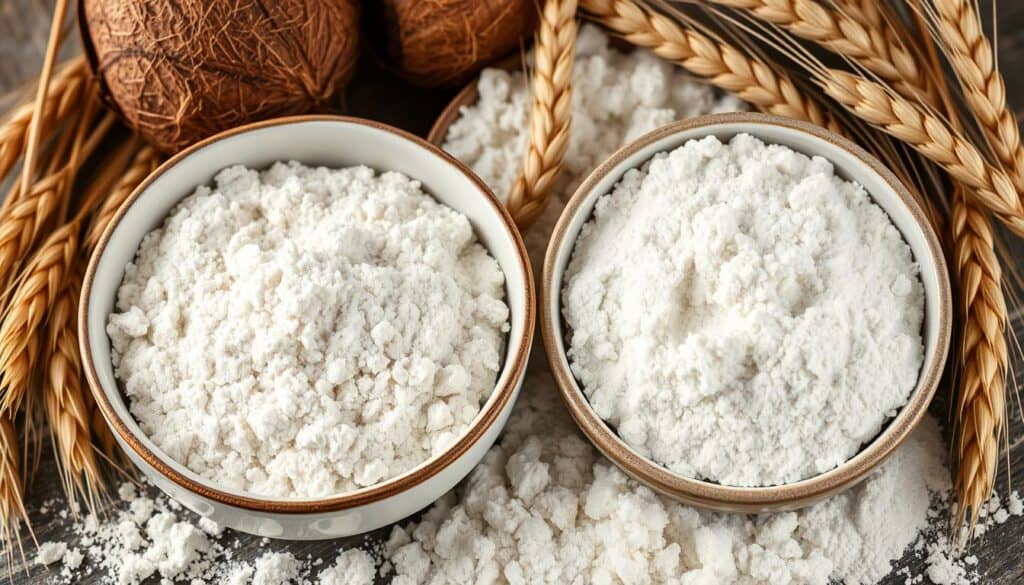
Coconut flour changes the game in baking. It absorbs liquids much faster than wheat flour. You’ll use much less of it. Here’s why it’s unique:
- Requires only 1/4 to 1/3 cup of coconut flour per 1 cup of wheat flour
- Needs additional eggs or binding agents to maintain structure
- Provides extraordinary coconut flour benefits in nutrition
Absorption Properties Explained
Coconut flour’s liquid absorption is amazing. For every 1/2 cup, add 3 eggs and 1/2 cup of liquid. This high absorption means you’ll need to adjust recipes for moisture and texture.
Gluten-Free Advantages
Coconut flour is gluten-free, which is a big plus. It’s safe for those with celiac disease or gluten sensitivities. It’s also packed with nutrients, like 12 grams of fiber in just 1/4 cup and manganese.
| Flour Type | Calories | Carbs | Fiber | Protein |
|---|---|---|---|---|
| Coconut Flour | 120 | 18g | 10g | 6g |
| White Whole Wheat Flour | 110 | 22g | 3g | 4g |
Pro tip: Mixing coconut flour with almond flour can make your baked goods even better. This combo can enhance flavor and texture, leading to amazing healthy treats.
Techniques for Baking with Coconut Flour
Exploring gluten-free baking can be tough, but mastering coconut flour recipes is exciting! Coconut flour needs special techniques that take practice to get right.
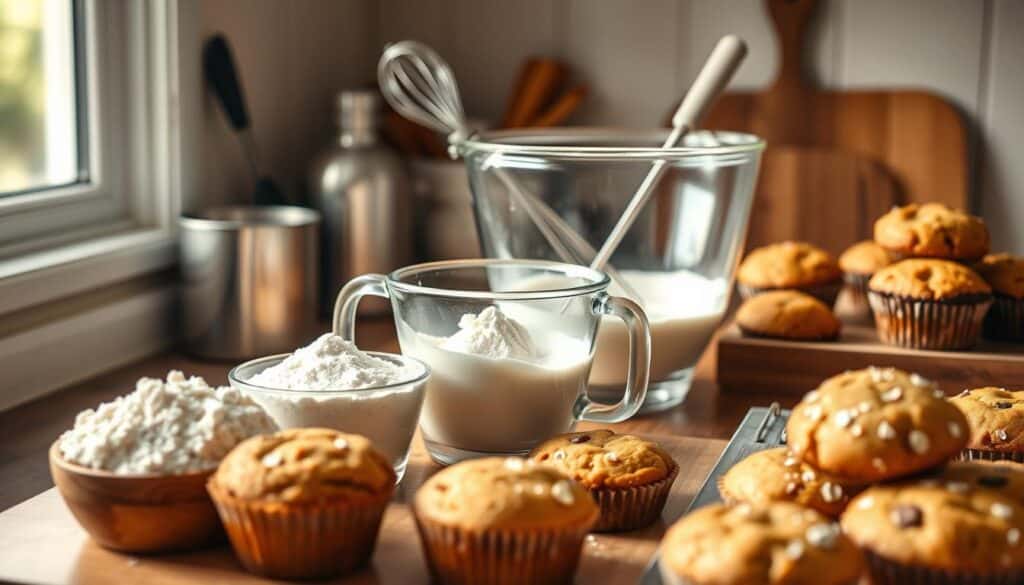
Let’s dive into the key strategies for baking with coconut flour. These tips will make your gluten-free cooking adventures a success!
Proper Measurement and Ratios
When using coconut flour, precision is crucial. It absorbs more liquid than regular flour, so measuring is important. Here are some essential tips for coconut flour baking:
- Use a kitchen scale for most accurate measurements
- Sift flour to prevent clumping
- Typically replace 1 cup wheat flour with 1/4 to 1/3 cup coconut flour
- Triple the number of eggs in your original recipe
Essential Ingredients for Coconut Flour Recipes
To make great gluten-free baked goods, know which ingredients work well with coconut flour.
| Ingredient | Purpose | Recommended Amount |
|---|---|---|
| Eggs | Provide structure and moisture | 3-6 eggs per 1/2 cup flour |
| Liquid Ingredients | Prevent dryness | Increase by 20-30% |
| Protein Powder | Enhance rise and texture | 2-4 tablespoons per recipe |
Pro tip: Whey protein or psyllium husk powder can make your coconut flour recipes better. Try these ingredients to get the best gluten-free baked goods!
Remember, baking with coconut flour is an art. Don’t worry if your first tries aren’t perfect. Keep practicing, and you’ll get better!
Delicious Coconut Flour Recipes to Try
Exploring gluten-free baking with coconut flour is a fun journey! It’s a great way to find healthy alternatives for your kitchen. These recipes are not only tasty but also offer nutritional benefits that regular flour can’t.
Let’s dive into some tasty coconut flour recipes. They’ll change how you bake healthy!
Classic Coconut Flour Pancakes
Breakfast fans, rejoice! Coconut flour pancakes are a game-changer for low-carb recipes. Here’s how to make perfect pancakes:
- Use 1/4 cup coconut flour for every 4-5 eggs
- Add a pinch of baking powder for fluffy texture
- Incorporate vanilla extract for enhanced flavor
Moist Coconut Flour Banana Bread
Looking for a gluten-free treat that’s both tasty and healthy? Coconut flour banana bread is moist and flavorful. The key is to balance the wet and dry ingredients well.
| Ingredient | Quantity | Nutritional Benefit |
|---|---|---|
| Coconut Flour | 1/4 cup | High in fiber, low in carbs |
| Ripe Bananas | 2 medium | Natural sweetness, potassium |
| Eggs | 4-5 | Protein, binding agent |
Coconut Flour Chocolate Chip Cookies
Healthy treats can be rich and indulgent too! These chocolate chip cookies show that low-carb recipes can be a real treat. Pro tip: Let the batter rest for 5 minutes to help coconut flour absorb moisture.
- Use sugar-free chocolate chips
- Experiment with different sweeteners
- Ensure cookies are completely cooled before storing
With these recipes, you’ll see the magic of coconut flour. It’s a versatile, nutritious ingredient that makes baking healthy both fun and delicious!
Troubleshooting Common Coconut Flour Issues
Working with coconut flour in baking can be tricky. But, knowing its special traits helps make tasty, healthy treats. This ingredient needs a certain way to get the right texture and flavor.
Managing moisture is key when using coconut flour. You need to pay close attention to how much liquid you add. A 1/4-cup of coconut flour has about 5 grams of fiber. This means it absorbs a lot of liquid. So, use eggs or other binding agents to keep your baked goods moist.
Mastering Moisture and Texture
Adjusting liquid amounts is important with coconut flour. If your mix is too thick, add a little liquid at a time. If it’s too thin, add more coconut flour slowly. Baking at a lower temperature, around 350°F, helps cook evenly and prevents burning.
Storage and Preparation Tips
Keep your coconut flour in a sealed container at room temperature to keep it fresh. Different brands absorb liquid differently. So, you might need to adjust your recipe based on how it looks and feels. With time, you’ll get better at using coconut flour in your baking!
